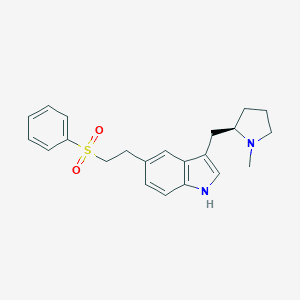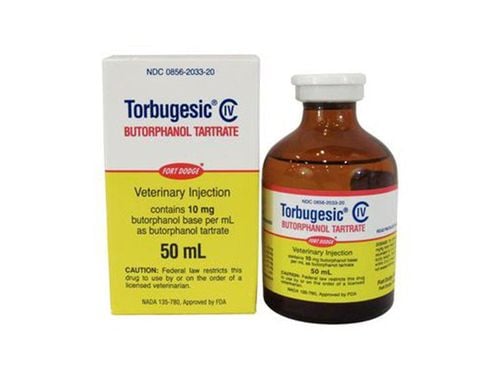This is an automatically translated article.
Ditanavic Fort has main ingredients including Paracetamol and Tramadol HCL. Ditanavic Fort is used in the treatment of mild to moderate pain symptoms, with or without fever. Learning the basic information about Ditanavic Fort's composition, uses, dosage and side effects will help patients improve the effectiveness of their treatment.
1. What is Ditanavic Fort?
Ditanavic Fort is formulated under hard capsules, with the main ingredients including:
Paracetamol content 325 mg. Tramadol HCL content 37.5 mg. Excipients: Tapioca starch, Talc powder, Magnesium stearate just enough for 1 hard capsule. In which:
Paracetamol also known as Acetaminophen or N-acetyl-p-aminophenol belongs to the group of non-steroidal anti-inflammatory drugs (NSAIDs). Paracetamol is an active metabolite of Phenacetin that can replace aspirin in analgesic and antipyretic effects when administered in equal doses in grams. However, Paracetamol does not have the same anti-inflammatory effects as aspirin.
Paracetamol only affects Cyclooxygenase/Prostaglandin of the central nervous system, has no effect on systemic Cyclooxygenase, so this active ingredient has little effect on cardiovascular or respiratory system, does not cause irritation, damage and bleeding stomach blood as when taking drugs with active salicylates, does not change the balance of Acid - Base. Paracetamol has no effect on bleeding time or platelets.
Tramadol HCL is a synthetic opioid analgesic, acting by a central mechanism and possibly addictive. O-desmethyltramadol (M1) is a metabolite of Tramadol HCL that binds to the μ receptor of neurons, reducing Serotonin and Norepinephrine re-entry, thereby providing analgesia.
Tramadol HCL does not cause histamine release, does not affect left ventricular function and heart rate as when using Morphine.
2. What are the effects of Ditanavic Fort?
Ditanavic Fort is indicated for the treatment of mild to moderate pain symptoms, with or without fever in the following cases:
Headache, migraine; toothache; Dysmenorrhea ; Muscle and muscle pain; Pain in osteoarthritis, joints; Pain due to trauma; Pain after surgery or procedures.
3. Contraindications of Ditanavic Fort
Ditanavic Fort is contraindicated for people:
Hypersensitivity to any ingredient of Ditanavic Fort. History of allergy to other drugs containing Paracetamol or Metronidazole. History of allergy to non-steroidal anti-inflammatory drugs (NSAIDs) or synthetic opioid analgesics. On treatment with an MAO inhibitor or discontinued for less than 15 days. Have epilepsy that is not controlled by medication. Have a history of or are addicted to opioids. Glucose 6 Phosphate Dehydrogenase (G6PD) deficiency disease. Have a history of or are suffering from acute poisoning due to overdose of CNS depressants. Severe liver or respiratory failure. Under 15 years old. Pregnant or lactating women.
4. Dosage and how to use Ditanavic Fort:
Adults and children ≥ 15 years old:
Dose: Take 1-2 tablets/time x 2-3 times/day, at least 6 hours apart. The maximum dose per day should not exceed 8 tablets. Note:
Ditanavic Fort is usually taken after meals. Taking drugs containing Paracetamol in high and acute doses of 10 g can cause liver damage. Therefore, it should be used with caution.
5. Side effects when using Ditanavic Fort
Treatment with Ditanavic Fort in high doses or for a long time, can cause side effects such as:
Common: Neurological symptoms such as anxiety, confusion, restlessness, coordination disorder, nervousness neurological, sleep disturbances and visual disturbances. Gastrointestinal symptoms such as loss of appetite, nausea, vomiting, abdominal pain, bloating and constipation. Urinary tract symptoms such as urinary retention, urinary frequency, and heaviness can cause nephrotoxicity. Other symptoms include skin rash, hypotension, hypertonia, hematopoietic disorders, and anemia. Uncommon: Severe, hypersensitivity reactions may cause anaphylaxis. Neurological symptoms such as abnormal gait, cognitive disturbances, hallucinations, memory loss, depression, difficulty concentrating, paresthesias, convulsions, tremors and dysgeusia. Urticaria, vesicles, Stevens Johnson syndrome and toxic epidermal necrolysis. Other symptoms include orthostatic hypotension, tachycardia, syncope, dyspnea, and menstrual disturbances in women. Rare: Cardiovascular symptoms such as myocardial infarction, extrasystoles, pulmonary edema and cardiac arrhythmias. Neurological symptoms such as migraines, voice disturbances, and Serotonin syndrome. Gastrointestinal symptoms such as stomatitis, gastrointestinal bleeding and hepatitis. Other symptoms such as cataracts, tinnitus, deafness, increased blood creatinine, increased liver enzymes and proteinuria. These side effects are usually not serious and will improve soon after stopping using Ditanavic Fort. However, when detecting the above symptoms or any other abnormalities after taking Ditanavic Fort, users should promptly notify the treating doctor or go to the hospital for timely treatment.
6. Note the use of Ditanavic Fort
Use caution when using Ditanavic Fort in the elderly or in patients with anemia or impaired liver and kidney function. People with a history of epilepsy, a history of dependence on opioid drugs. Patients present with increased intracranial pressure or head trauma. Pregnant or lactating women: Ditanavic Fort is not recommended in these subjects. Drivers or workers who operate machinery may experience side effects of the drug, reducing alertness. It is not recommended to use the drug before and during work.
7. Ditanavic Fort drug interactions
Interactions of Ditanavic Fort with other drugs:
Related to Paracetamol:
Paracetamol increases the anticoagulant effect of Coumarin and Indandion derivatives. Phenytoin, Barbiturates, Carbamazepine, Isoniazid increase the hepatotoxicity of Paracetamol. In relation to Tramadol HCL:
Carbamazepine increases the dose of Tramadol HCL. Quinidine, Fluoxetin, Paroxetin, Amitriptylin reduce metabolism and increase the effect of Tramadol HCL. Tramadol HCL prolongs Prothrombin time when co-administered with Warfarin. Interactions with Beverages:
The risk of hepatotoxicity of Paracetamol is increased with the use of the drug in people with excessive and long-term alcohol use. Above is basic information about ingredients, uses, doses and precautions when using Ditanavic Fort. In order to bring about the best treatment effect for themselves and their families, users should carefully read the instructions for use of Ditanavic Fort, and strictly follow the treatment instructions of the treating doctor.
Please dial HOTLINE for more information or register for an appointment HERE. Download MyVinmec app to make appointments faster and to manage your bookings easily.













